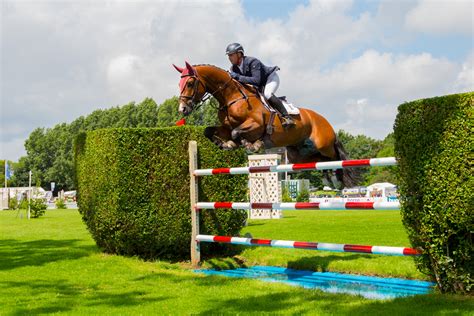How do horses see the world
- Anna Kodíček
- Nov 2, 2021
- 3 min read
Updated: May 16, 2022
The majority of people see the world using three base colours; red, blue and green. However horses see the world very differently to us as they only have two of these base colours. Horses, like dogs, are called dichromatic and see only blue and green. So what happens to the red colour? Well it seems as though it blends into the green tones and as such horses will find it difficult to differentiate between red and green. The image below was developed by Joseph Carroll and a team of researchers who analysed horses’ vision and compared it to humans. They showed that horses’ vision closely matched that of red-green colour blind humans.

Source: Carroll et al., 2001
Researchers have been investigating this for many decades as it is important when we consider our training tools. If horses can’t differentiate between red and green easily, then having jump poles that are red and green striped won’t help the horse much (See image below).

Source: Horse Jumps Jump 2 It, 2021
So if the research suggests horses can see blue as distinct from red and/or green should we be using blue poles more? Well, Julie Spaas and a team of researchers (2014) investigated this. They compared the jumping ability of 20 horses over solid blue, or solid green jumps in an arena and out on grass. They found that horses knocked fewer green poles than blue on grass, but when in the arena knocked over equal amounts of blue or green poles. So just because other research suggests horses can see blue clearly distinct from red/green doesn’t mean using blue will improve performance of a horse. Anna Stachurska and colleagues (2002) showed however that competition show jumpers made the fewest faults when jumping blue and white, and blue and yellow fences showing that the issue may not be the blue colour, but blue as a solid colour.
You may remember in the 2012 London Olympics multiple horses struggled to jump this fence (see image below). After the Olympics, equine professionals questioned the choice with some explaining that the red colour we see most likely matched the beige sand of the arena making it really difficult for the horses to judge its height.

Source: The Telegraph, 2012
So horses’ colour vision is different to ours, how should that influence our training and tools? Well if you jump you might want to consider picking striped jumps that won’t blend into the ground colour. If you use a target also make sure it doesn’t blend into the surroundings, and if you use different colour targets be aware that they may only be able to distinguish a few solid colours compared to the amount we can and consider using striped or otherwise patterned targets. If you are curious about what your horse might be seeing, this colour blindness simulator can give a rough indication https://www.color-blindness.com/coblis-color-blindness-simulator/. Select Red-blind/Protanopia to see the difference. For example here is that same image before and after going through the filter:
Source of original: Turf Matters, n.d.
References:
Caroll. J, Murphy. C.J, Neitz. M, Ver Hoeve. J.N, and Neitz. J, (2001) Photopigment basis for dichromatic color vision in the horse Journal of Vision [Journal] 1(2) DOI: https://doi.org/10.1167/1.2.2
Spaas. J, Helsen. W.F, Adriaenssens. M, Broeckx. S, Duchateau. L, and Spaas. J.H, (2014)
Correlation between dichromatic colour vision and jumping performance in horses The
Veterinary Journal [Journal] 202(1) pp. 166-171 DOI:
Stachurska. A, Pięta. M, and Nesteruk. E, (2002) Which obstacles are most problematic for
jumping horses? Applied Animal Behaviour Science [Journal] 77 pp. 197-207 DOI:





Comentários